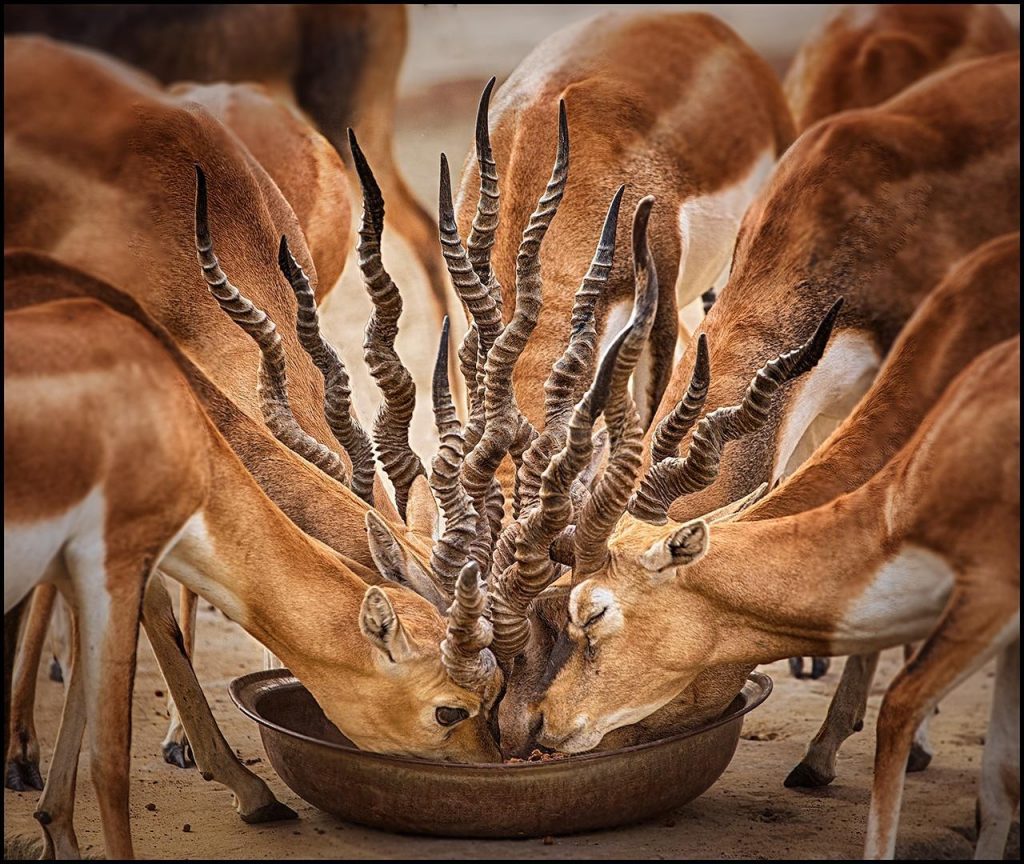The six spiral-horned antelope species live in areas of Africa below the Sahara Desert. They are able to eat a variety of food, depending on what’s available, unlike mammals with more specialized diets. Greater kudu are found in woodland and hilly areas of eastern, central, and southern Africa.
Other kudu species live in thicket vegetation, dry woodlands, or savannas in eastern and southern Africa. Common and giant eland live in savanna and woodland habitats of southern, central, and eastern Africa.

As browsers, the muzzle of eland and kudu species is more slender and narrow than that of their grass-eating relatives. They can pick out high-quality foods such as fruits, seedpods, flowers, leaves, and bark. Spiral-horned antelope have small, low-crowned teeth.
Their digestive systems don’t process fibrous food, such as grass, as well as their cattle relatives. When eating, they use their massive horns to break off branches to reach tasty leaves. Giant eland bulls break branches to provide food for the cows and calves! The horns are also handy for digging up thick-leafed plants, melons, bulbs, roots, and onions.















